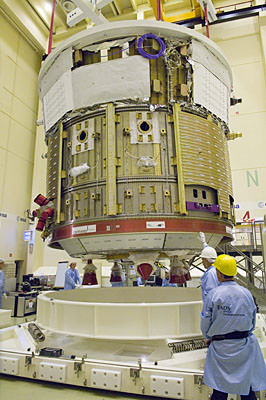[/caption]
The Jules Verne Automated Transfer Vehicle (ATV) has done its duty â€" it even went above and beyond its expected capabilities. But the end is nigh, and soon, on September 29 the ATV will become a fireball and burn up in the Earth's atmosphere, never to be seen again. But before it does, people in North America and Europe have the perfect opportunity to see it sail overhead this weekend in its low Earth orbit, and according to
Spaceweather.com,
the ATV will glow about a brightly as the North Star, Polaris. To find out when and where to look for the ATV in the evening or early morning skies, check out
Spaceweather.com's great satellite tracking webpage.
Just plug in your zip code and you'll be able to get tracking information for all the satellites that will be visible for the next few days. Also,
Heavens Above
is a great site to find tracking information, as well. So get out there and bid Jules Verne adieu. Here's some of the great things the ATV accomplished while on orbit at the ISS, and a movie of its undocking too…
The Jules Verne spent five months docked to the space station where it delivered supplies (and fun things like a manuscript written by its namesake.) The supply ship turned into a tug boat when its engines were fired up to help the ISS avoid a piece of space junk. It also served as an impromptu bedroom for the space station crew.
When will the next ATV fly? Sometime in 2010, and the name for that ship has not yet been revealed. It will follow the debut of another space station cargo ship, Japan's H-2A Transfer Vehicle, set for next year.
Here's a
movie of the Jules Verne undocking from the ISS.
Source: Spaceweather.com
 Universe Today
Universe Today
